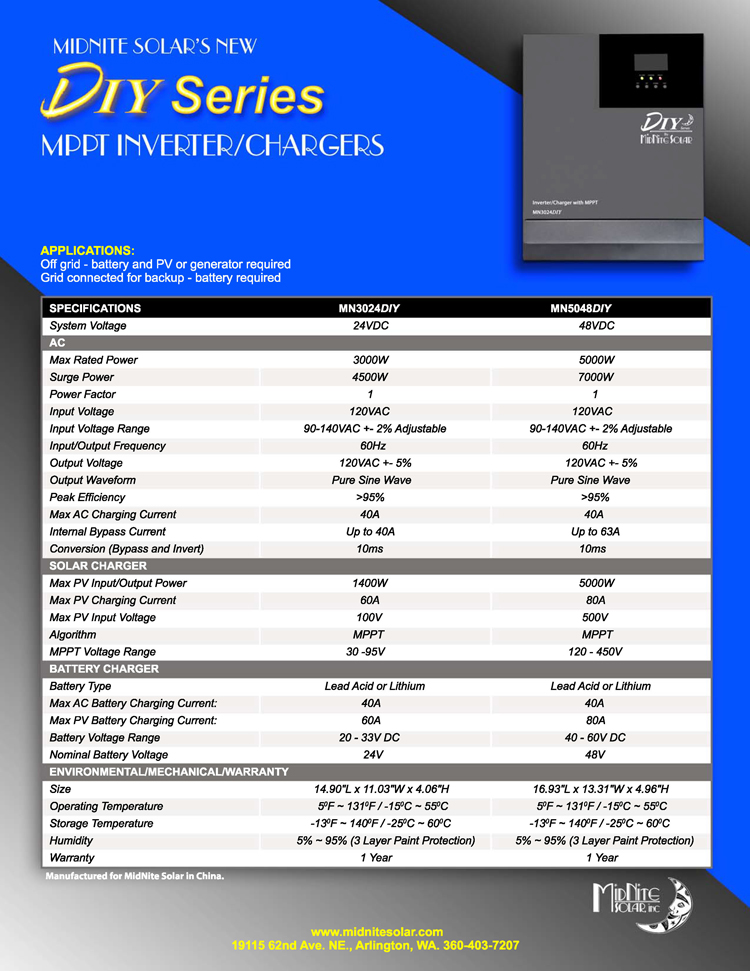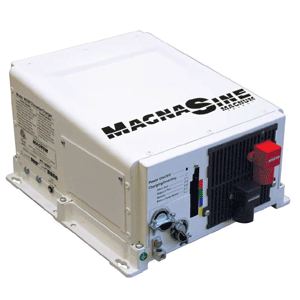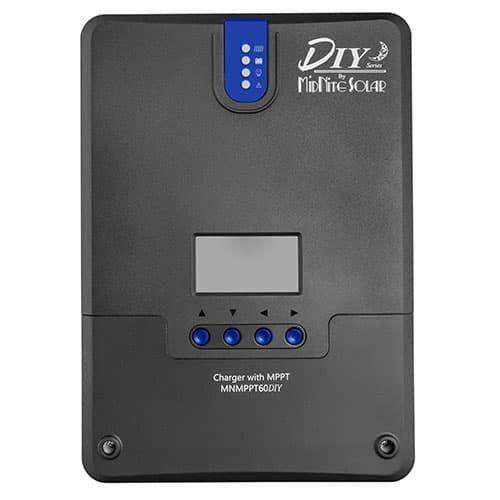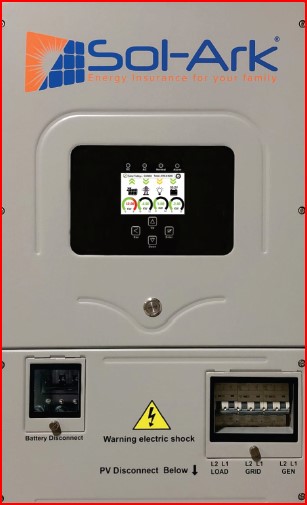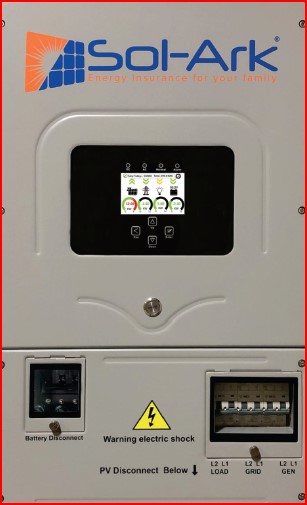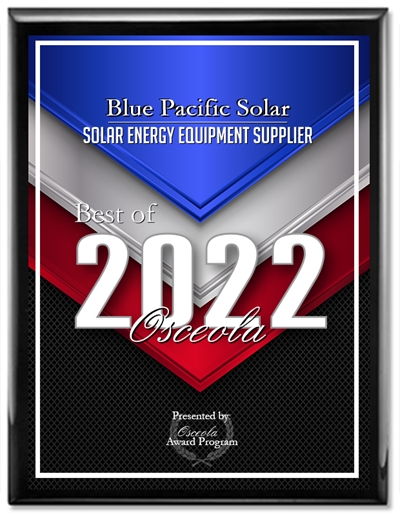Grid-Interactive Voltage Drop Wire Size Design Considerations
 Ideally, for off-grid / grid-interactive
and on-grid inverter wiring, the total voltage drop for the grid-tied AC side should be <1% when possible. When we design complete systems, we do our best to stay under 1.5% (General industry acceptable
tolerance is 1 - 1.5% AC Vdrop). The max. of 1.5% AC voltage drop is all about maximizing inverter up time during Utility voltage swings.
Ideally, for off-grid / grid-interactive
and on-grid inverter wiring, the total voltage drop for the grid-tied AC side should be <1% when possible. When we design complete systems, we do our best to stay under 1.5% (General industry acceptable
tolerance is 1 - 1.5% AC Vdrop). The max. of 1.5% AC voltage drop is all about maximizing inverter up time during Utility voltage swings.
Grid Tie Inverters Enphase, SMA, Sol-Ark and SolarEdge residential and light commercial applications.
Ideally, the total voltage drop for the grid-tied AC side should be kept to less than 1% when possible. This applies to off-grid, grid-interactive, and on-grid inverter wiring. We strive to keep our complete system design within 1.5% of the AC voltage drop.
This is the general industry acceptable tolerance range of 1 to 1.5%. The max of 1.5% AC voltage drop is all about maximizing inverter up time during Utility voltage swings.
Grid Tie Inverters Enphase, SMA, Sol-Ark and SolarEdge residential and light commercial applications.
Inverters / Chargers Off-Grid, stand alone, bimodal, battery-based powering home, cabin, or commercial systems.
Inverters / chargers are solid-state electronic devices used in solar and wind energy systems. The inverters Blue Pacific Solar sell employ the latest in power electronics to produce AC power from a DC power source.
The power source can be a battery bank, solar panels directly or the electricity produced by a wind turbine. Inverters come in a wide range of designs and circuits. We have chosen a few inverter companies that make durable, reliable products.
These inverters also come with the longest guarantees. Inverters use different switching devices and control methods to affect the electrical waveform properties. Inverters are an essential part of a solar or wind power system. They can charge batteries, monitor the system, control it, and use MPPT (maximum power point tracking).
Off-grid, or battery-based, inverters convert DC electricity from a battery bank to AC. The solar array and/or wind generator can be used to charge the batteries. A charge controller is used to do this. Only the power demanded by the loads is then inverted to AC.
It is important to properly size the inverter and battery bank for systems without access to the electrical grid. The nameplate capacity of an inverter is measured by its maximum continuous output in watts.
The inverter capacity limits the sum of all AC loads you can operate simultaneously. Most AC appliances list their power consumption. This is usually located near the power cord. It can also be found in the equipment manufacturer's owner's manual.
Add up the power consumption of all the appliances you plan to use at once. This number will determine the minimum size of your inverter.
Ensure you select an inverter with surge capability if your appliances use induction motors. Appliances like washers, dryers, dishwashers, furnace electronic controls, and large power tools usually have higher start-up loads. Create a list of the equipment you want to run and the duration each day.
Blue Pacific Solar can help you design an off-grid system. Our staff of Solar Energy Consultants will guide you through the process. Call us to get started!
Off-grid inverters will output either pur
e sine wave or modified sine wave AC electricity. Pure sine wave inverters can closely mimic utility grid power and will run any AC appliance. Sine wave inverters with cleaner waveforms, such as the Exeltech XP line, are often desired for sensitive audio or telecommunications equipment.
Modified sine wave inverters are an economical choice when waveform is not critical. They often have a high surge capacity for motor starting and retain good efficiency when partially loaded. Unfortunately, this type of inverter may harm certain delicate appliances. These appliances include rechargeable tools and flashlights, laser printers, copiers, and variable speed drives.
Some audio equipment may produce a background buzz when operated. Additionally, some ceiling fans with a speed control may have issues when using a modified sine wave inverter. Most battery-based inverters found on our web site (portable inverters being the exception) supply standard 120VAC / 60Hz single-phase outputs.
The SMA Sunny Island, Magnum MS-4024, and OutBack FX Series inverters can be stacked in pairs for 240VAC. Pairs of OutBack and Sunny Island inverters can be wired in parallel. This will increase the amount of output power at 120VAC single-phase or 120/240VAC split-phase. Magnum MS-PAE inverters provide 120/240VAC power.
They can be connected in parallel to increase power output.
Battery-based inverters may interfere with radio and television reception, cause noise on telephones or buzz in audio equipment. Interference can be minimized by using pure sine wave inverters. The inverter should be located as close to the batteries as possible.
Cables connecting the inverter to the battery should be twisted together. AC lines should be run separate from other wiring, such as telephone wires. The inverter should be located away from appliances that are susceptible to interference.
All inverters cause interference with AM radio reception. Battery-based inverters require high current from a battery bank to operate large loads. A 2kW inverter will draw 200 A from a 12 VDC battery bank. Large cables and good connections are required for safe operation.
Grid interactive inverters can export power to the utility grid. They can also provide emergency backup power during a grid outage. This type of inverter is known as a bimodal inverter. Critical loads can be supplied with power during a power cut.
Inverters use batteries to store energy. This enables them to operate off-grid during a blackout. Magnum Energy is a great utility interactive inverter. We often use the inverter in our home power emergency backup kits.
The grid interactive inverter is connected to a battery bank with a voltage of 12, 24, or 48 VDC. It is then linked to an AC subpanel for powering critical loads. Finally, it is connected to the building's utility main panel. The battery bank is charged by the solar array connected through a charge controller.
Under normal conditions, it operates like any grid-tie inverter and will export any excess power produced by the solar array. During a utility blackout, the inverter will disconnect from the grid. It will then supply AC power to the critical load subpanel. This power will be drawn from the battery bank.
Blue Pacific Solar offers a home emergency backup system. It works with SMA or Enphase Microinverters. This system can use your solar array to recharge batteries during blackouts.
When the outage is over, the inverter will automatically switch back to grid-tie operation and recharge the batteries. The Outback Radian GS grid interactive inverters have split phase 120/240 VAC output from a single inverter.
The Outback GFX and SMA Sunny Island inverters generate 120 VAC output. It is possible to stack two inverters to obtain 120/240 VAC output. The SMA Sunny Island is designed for a specific purpose. It interacts with a Sunny Boy grid-tie inverter to create an "AC Coupled" power system.


